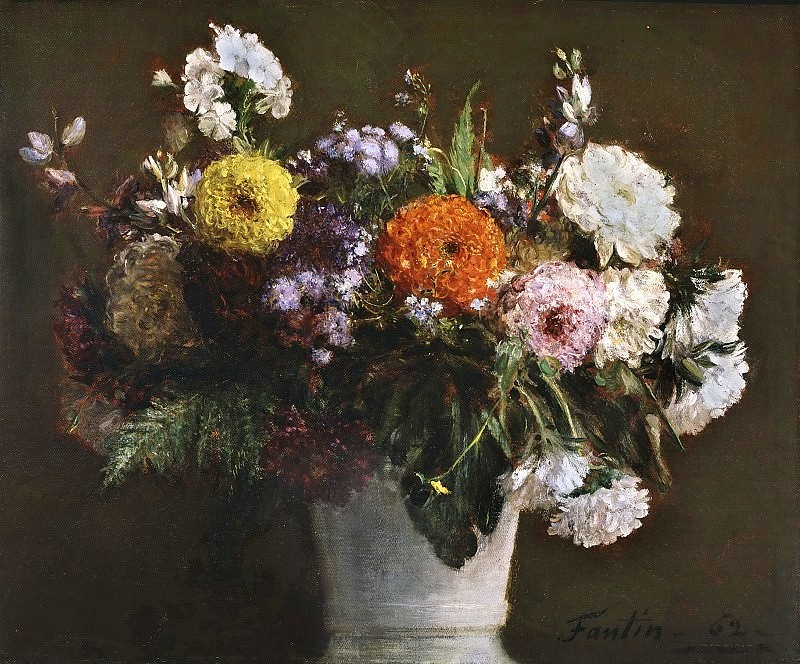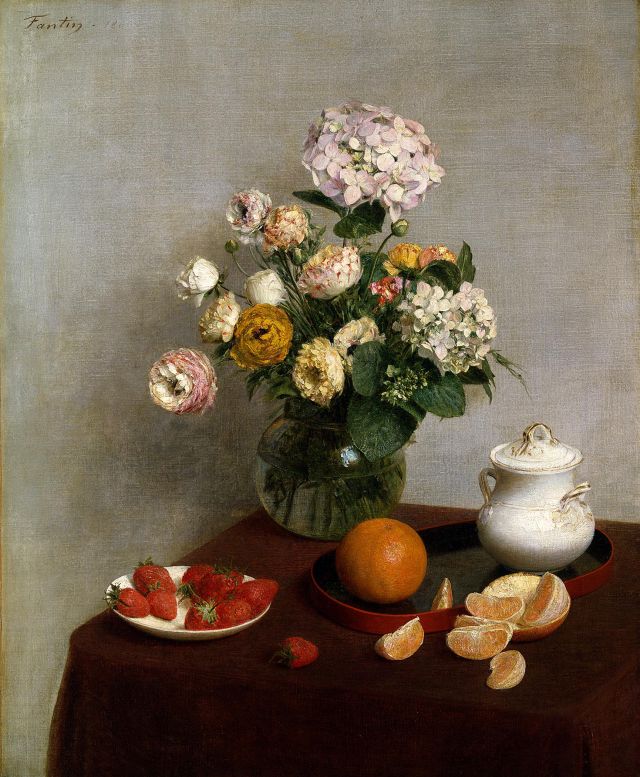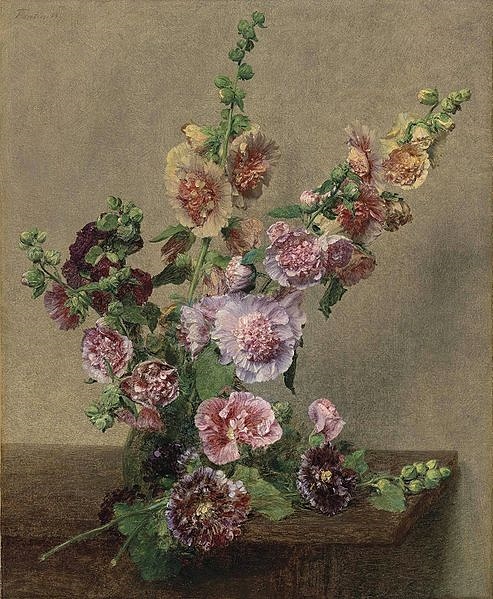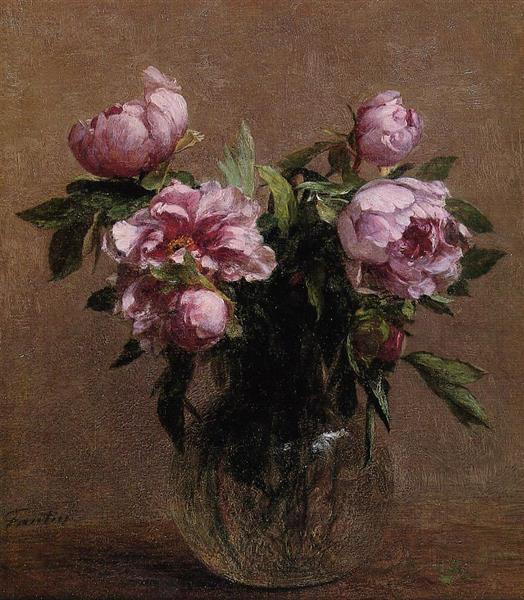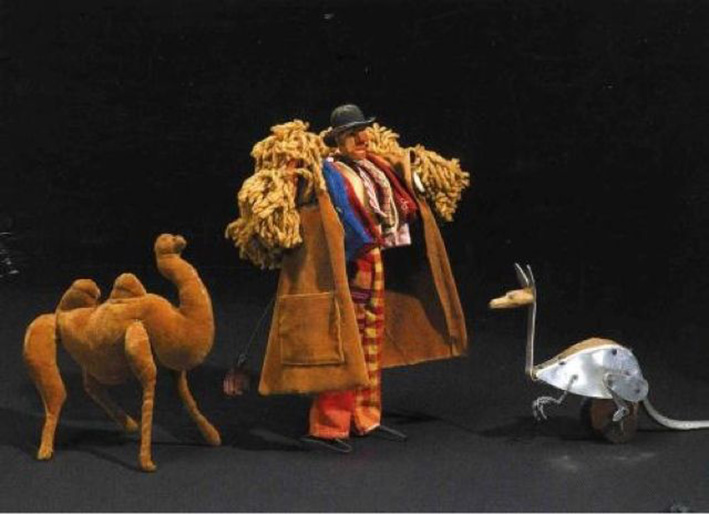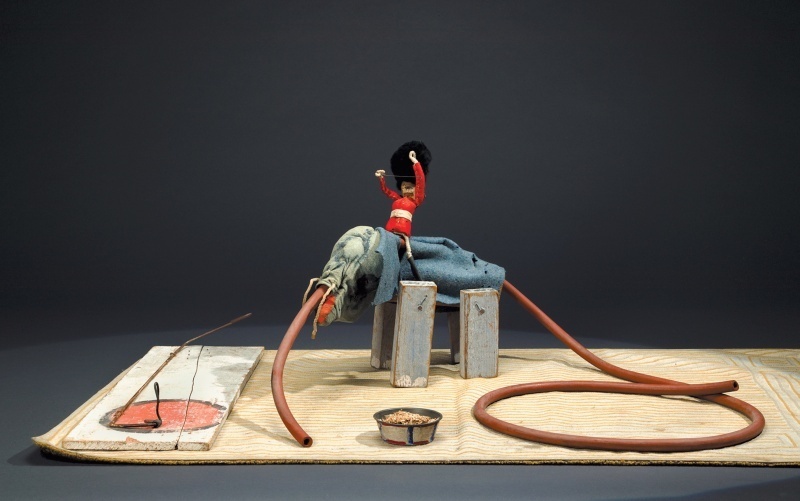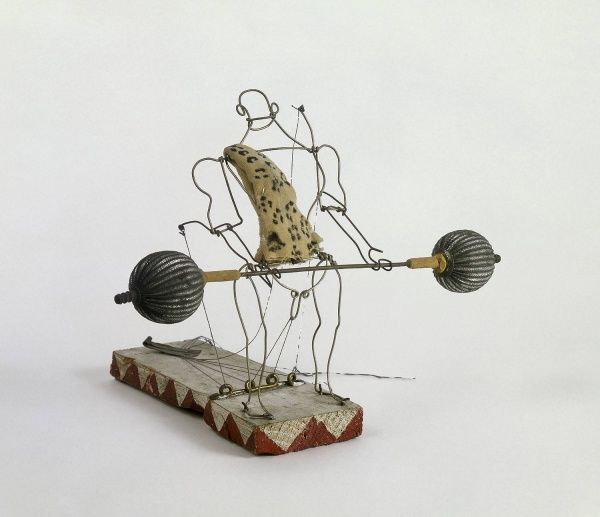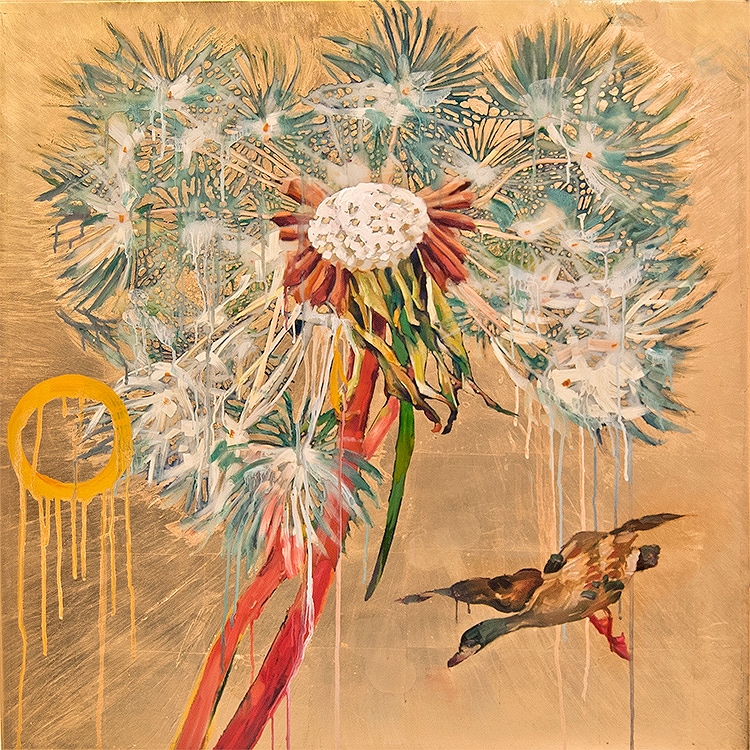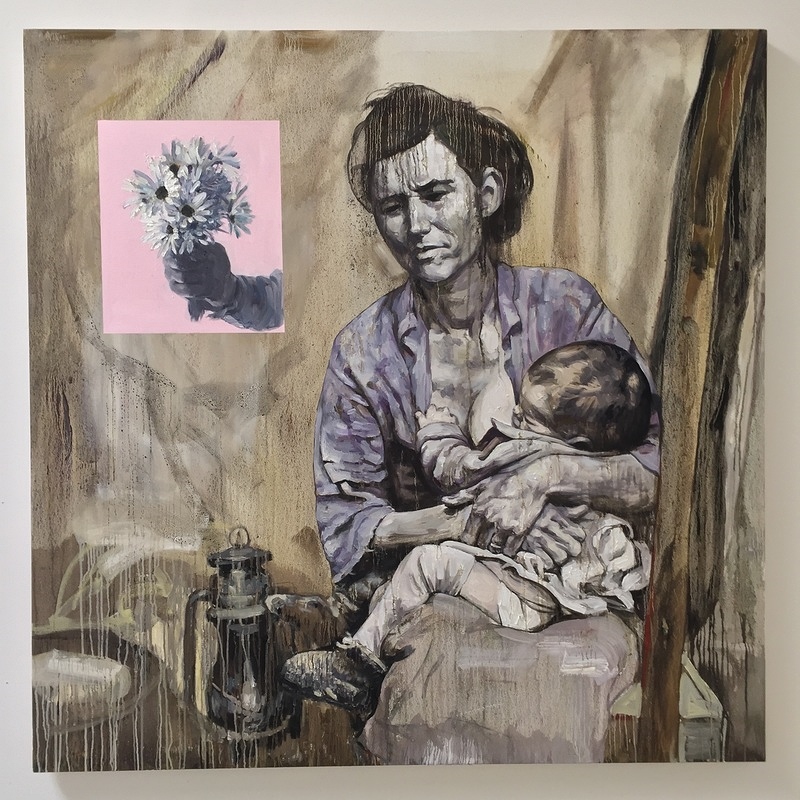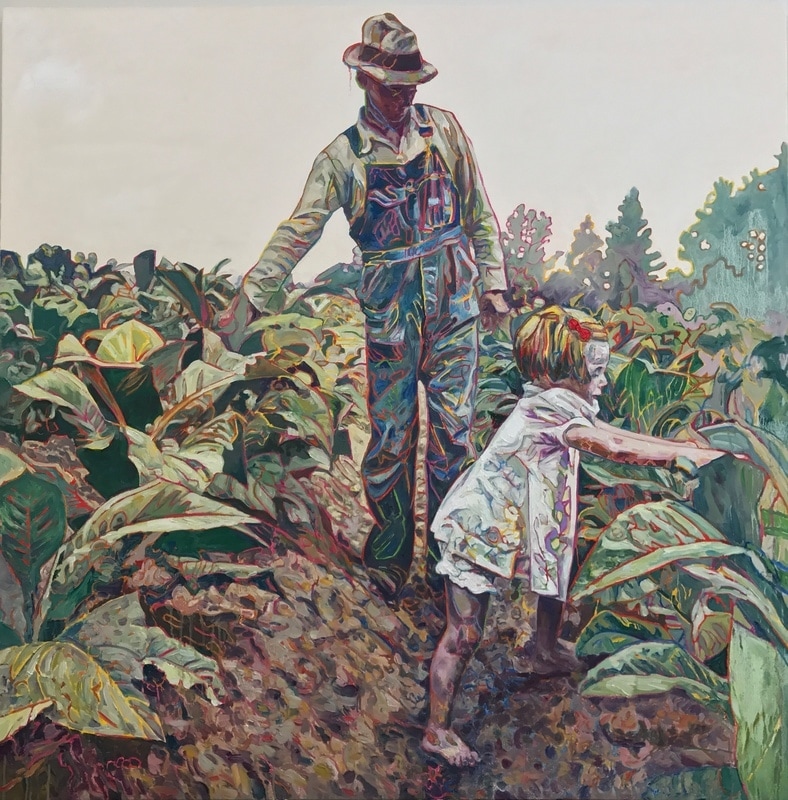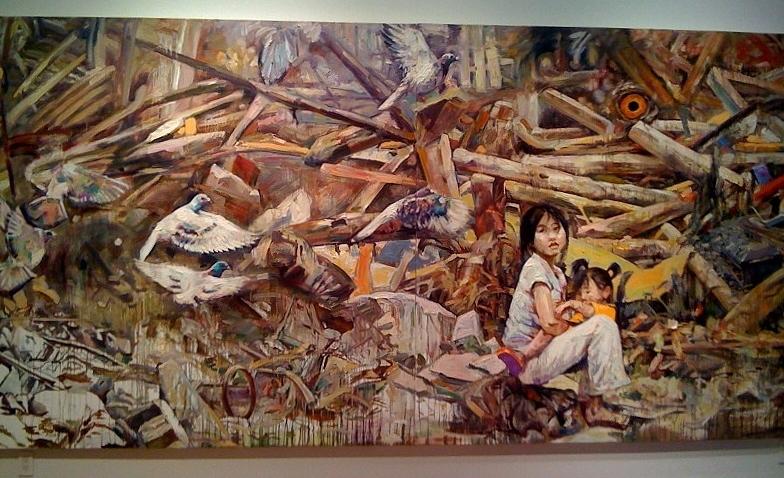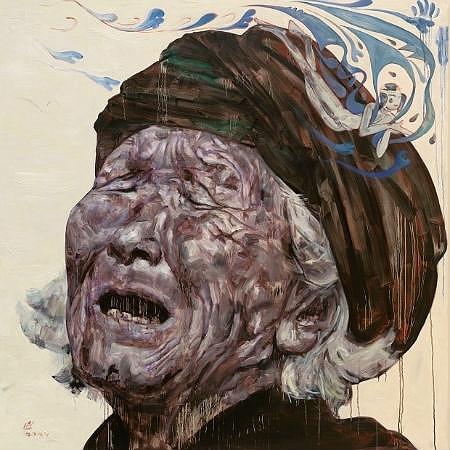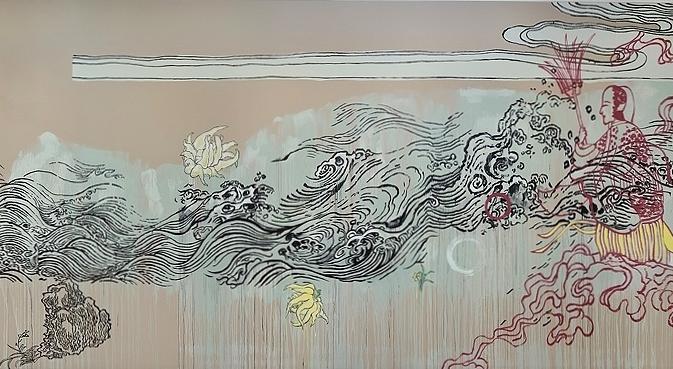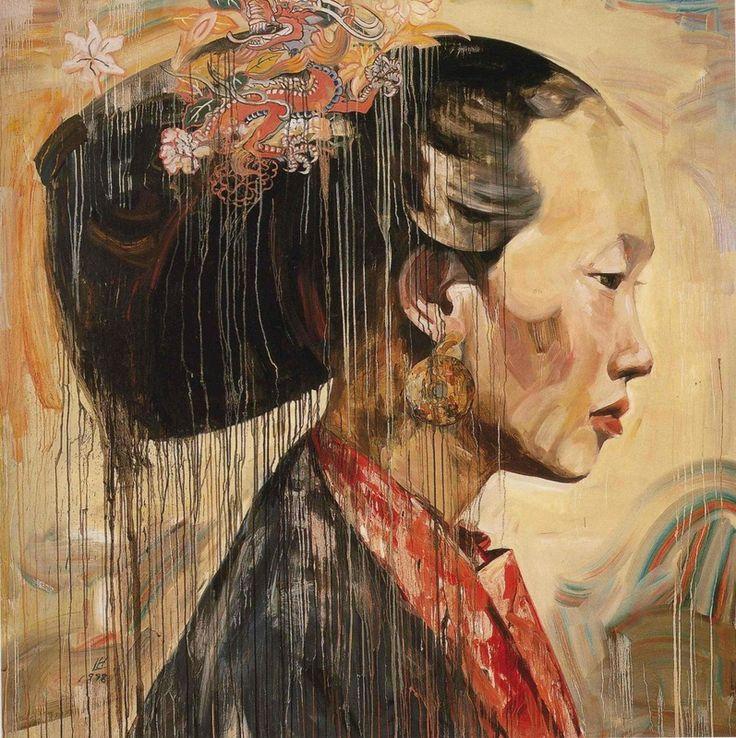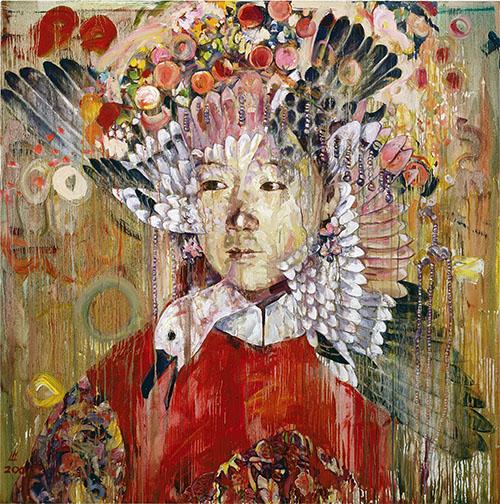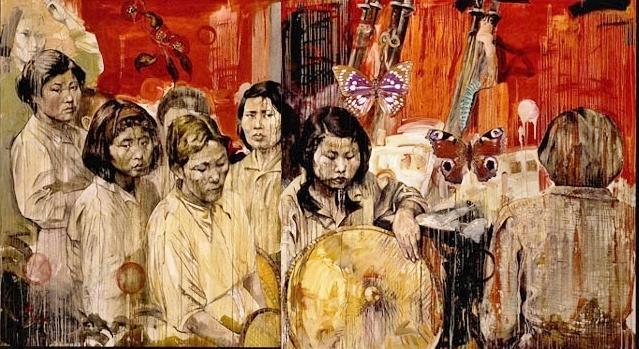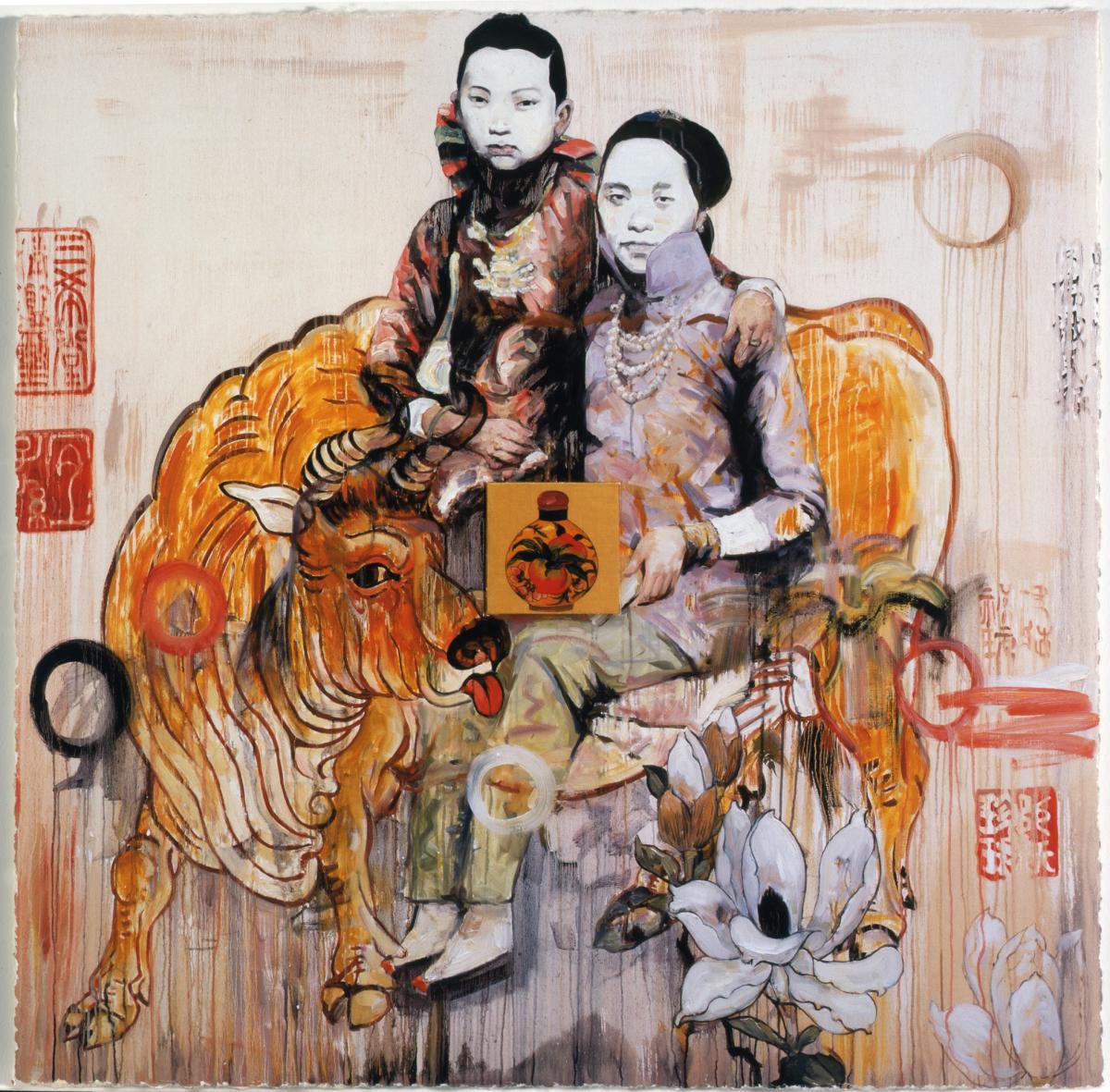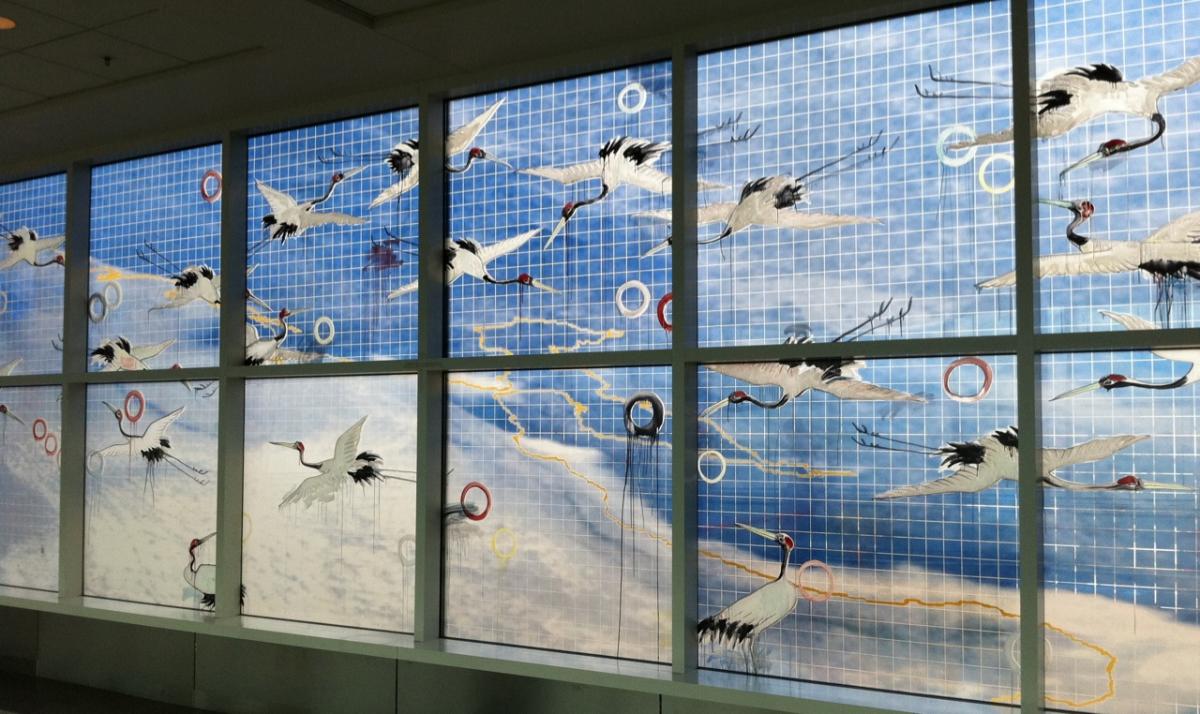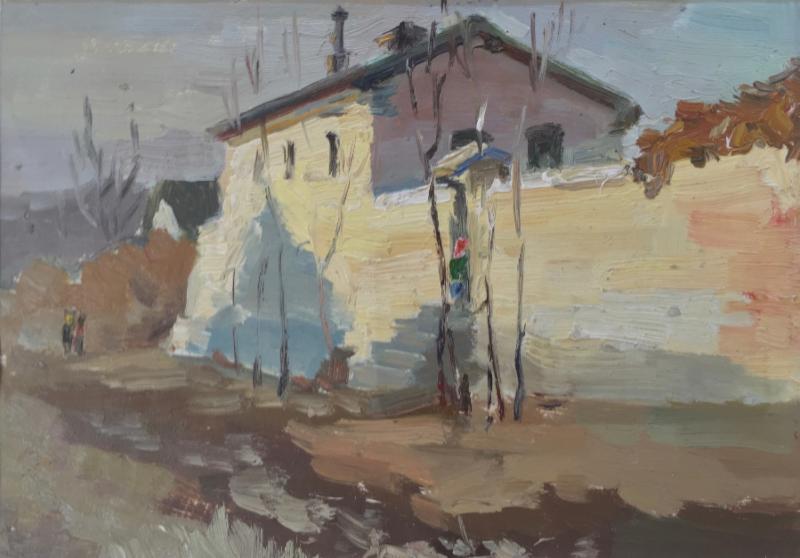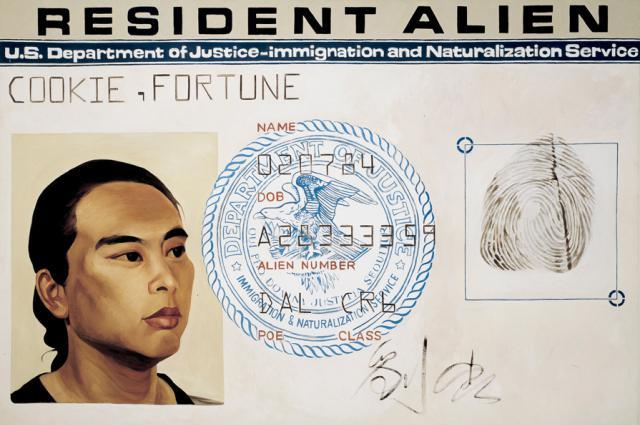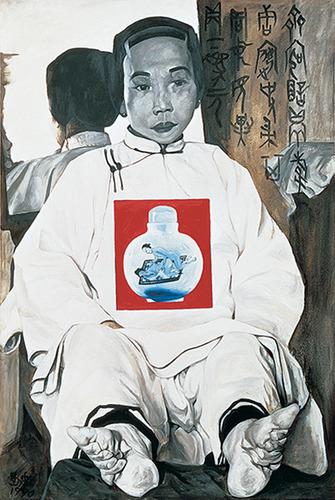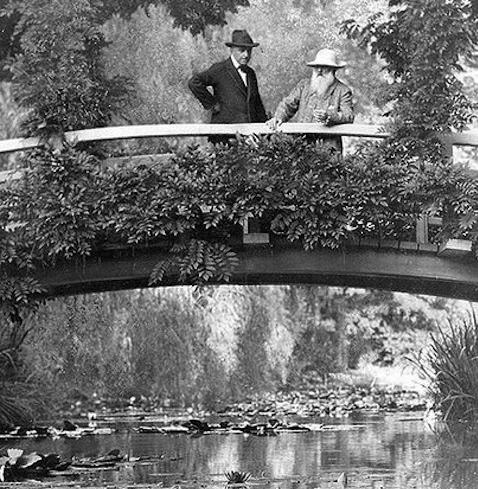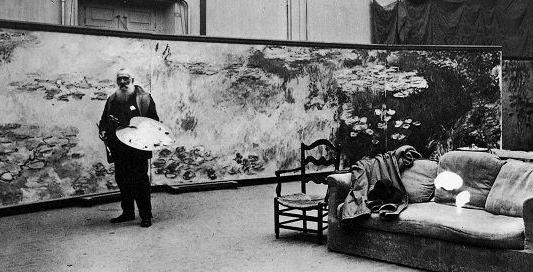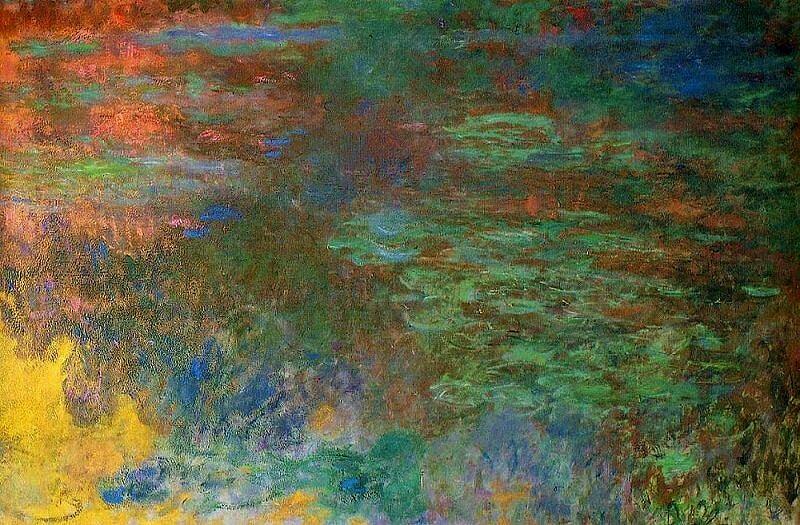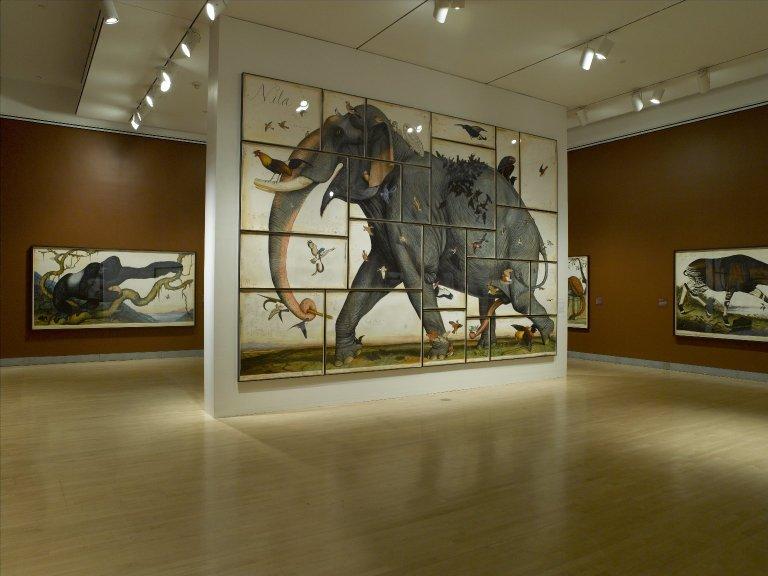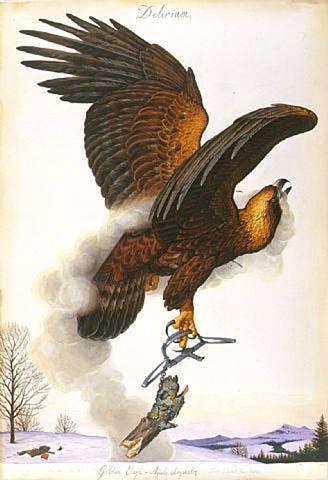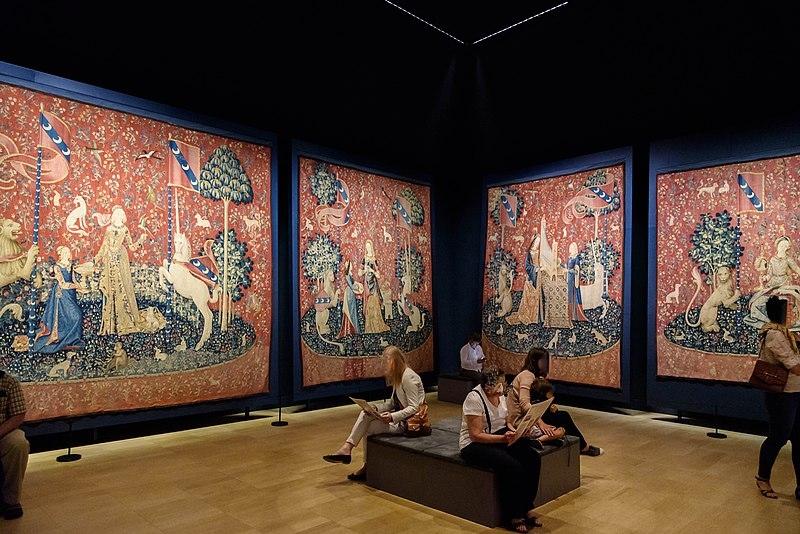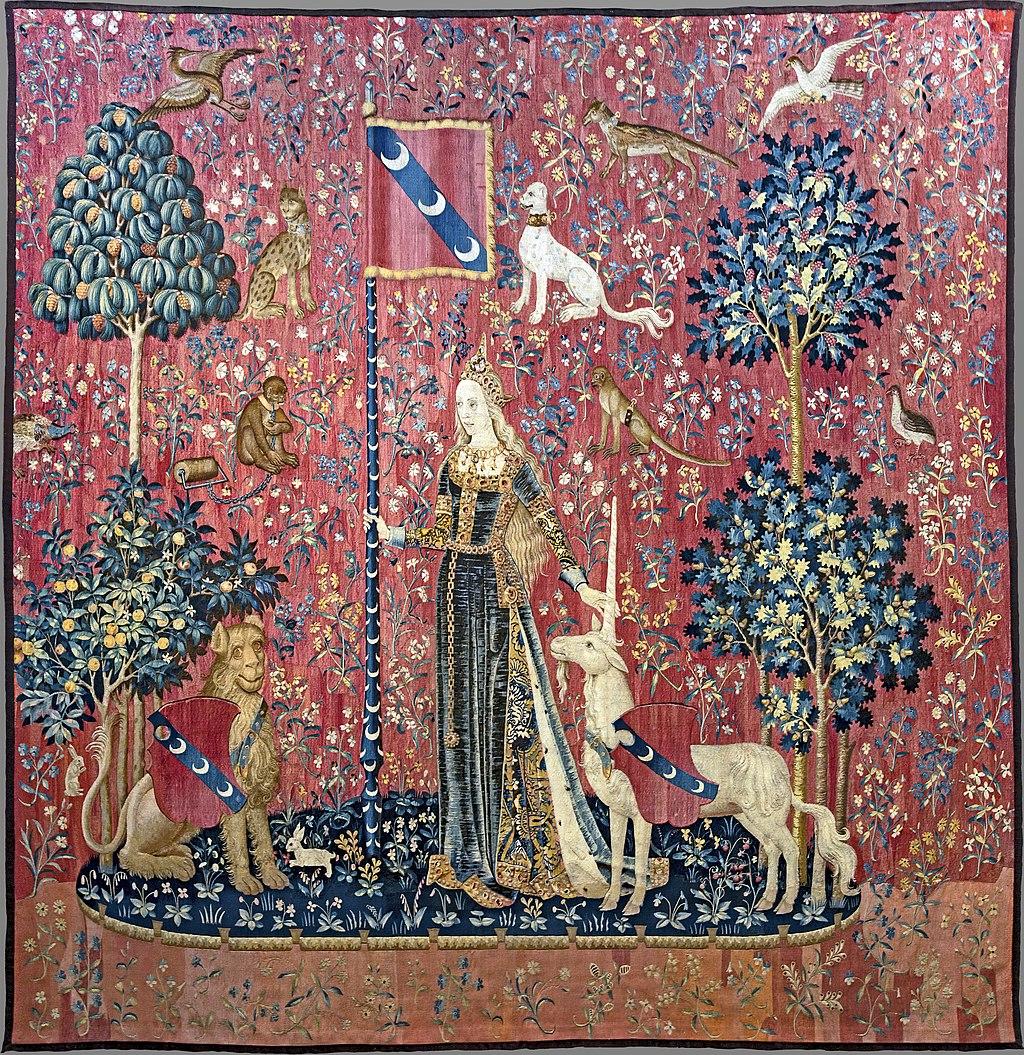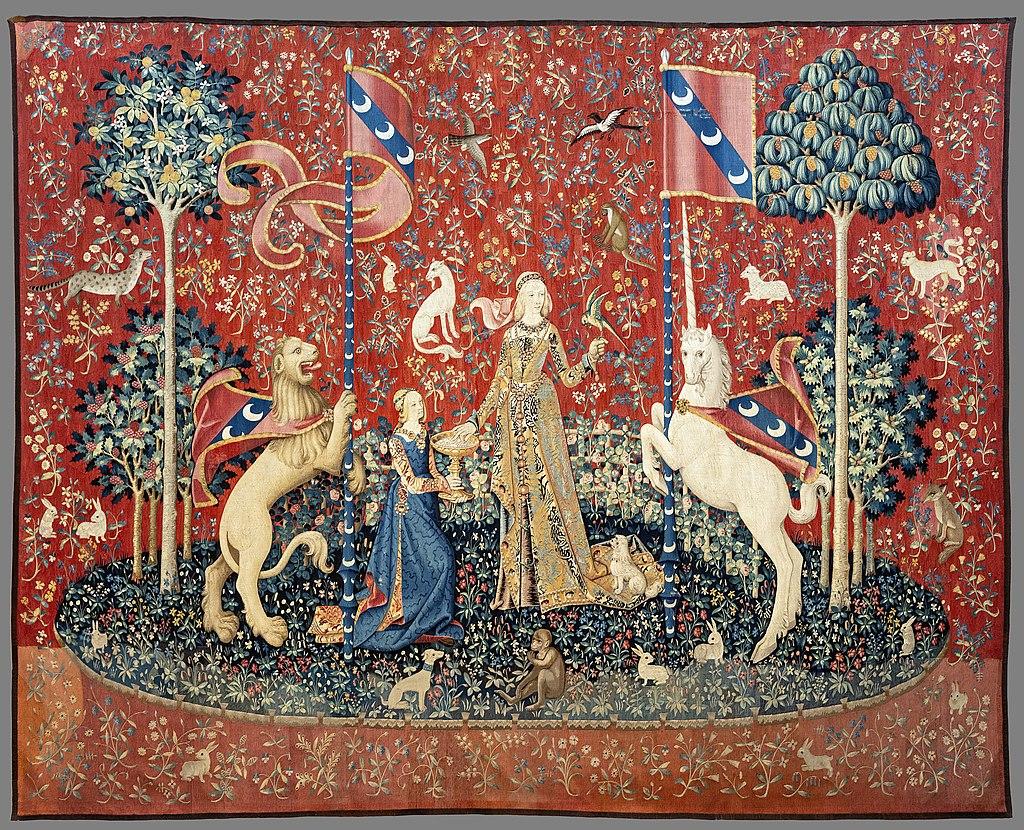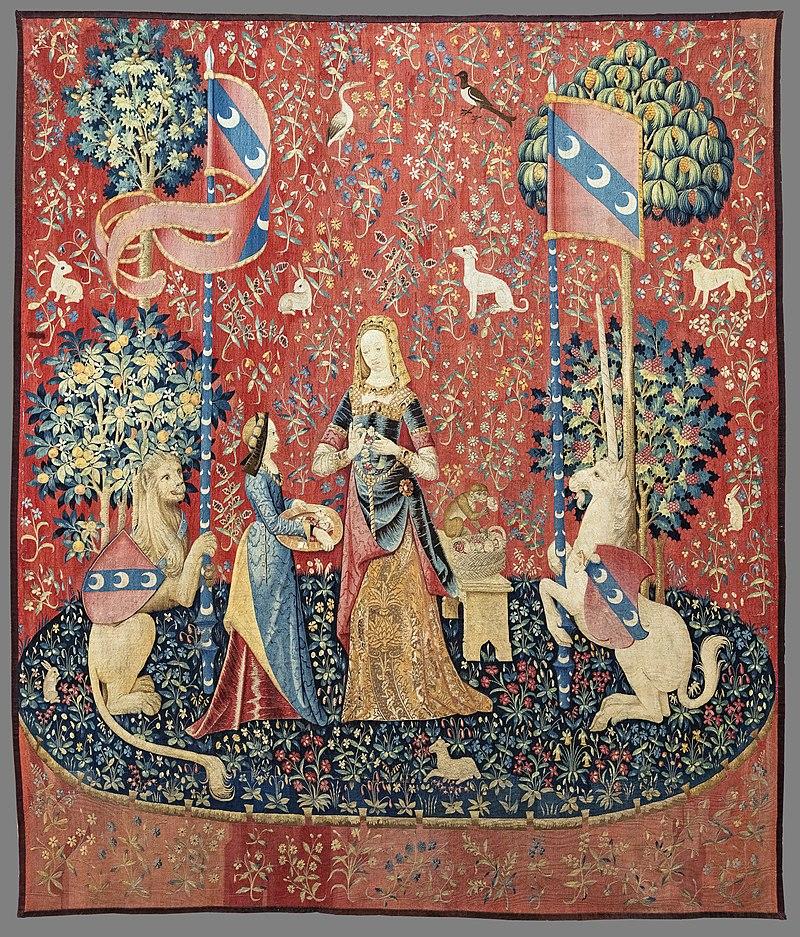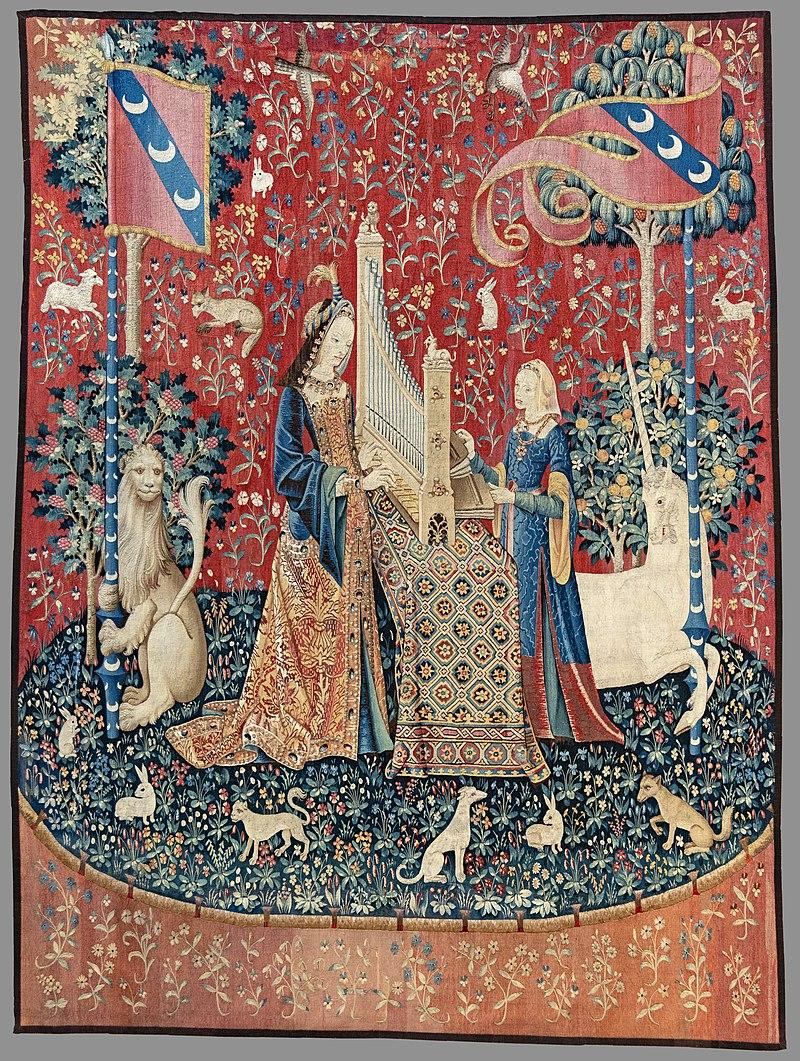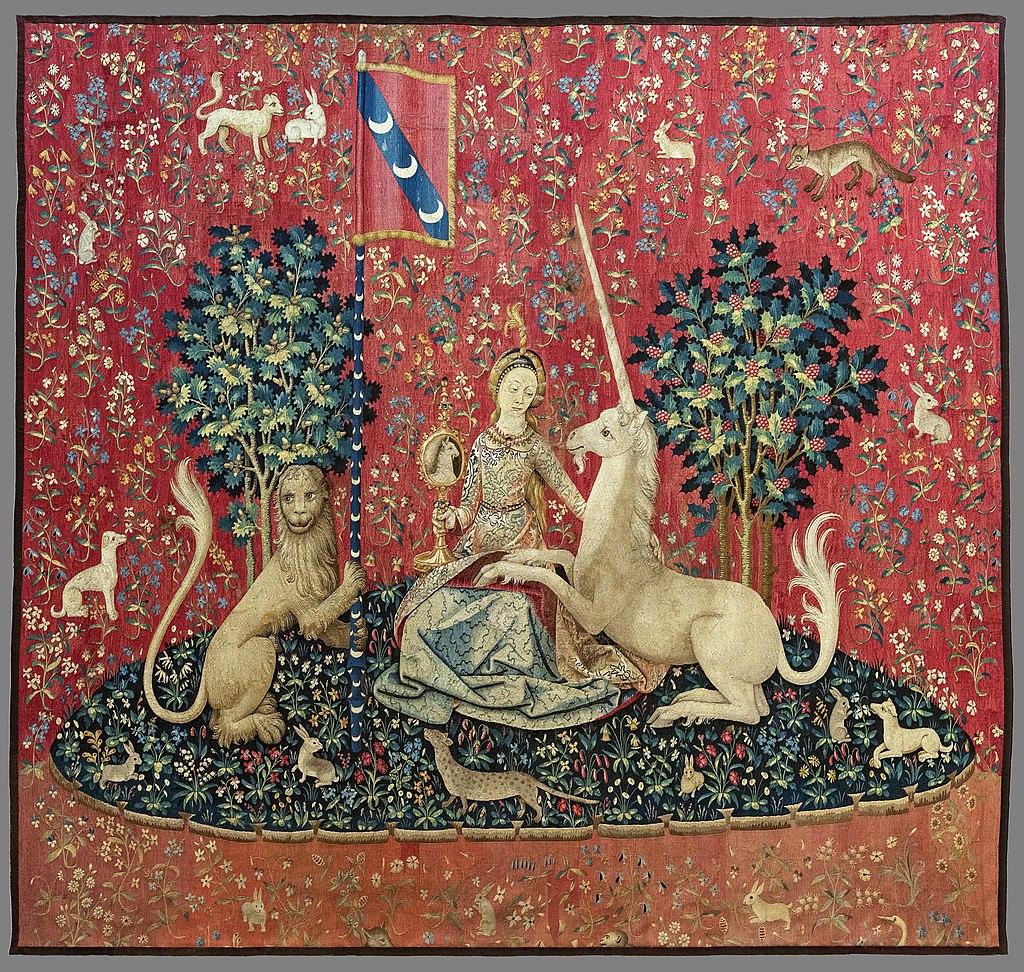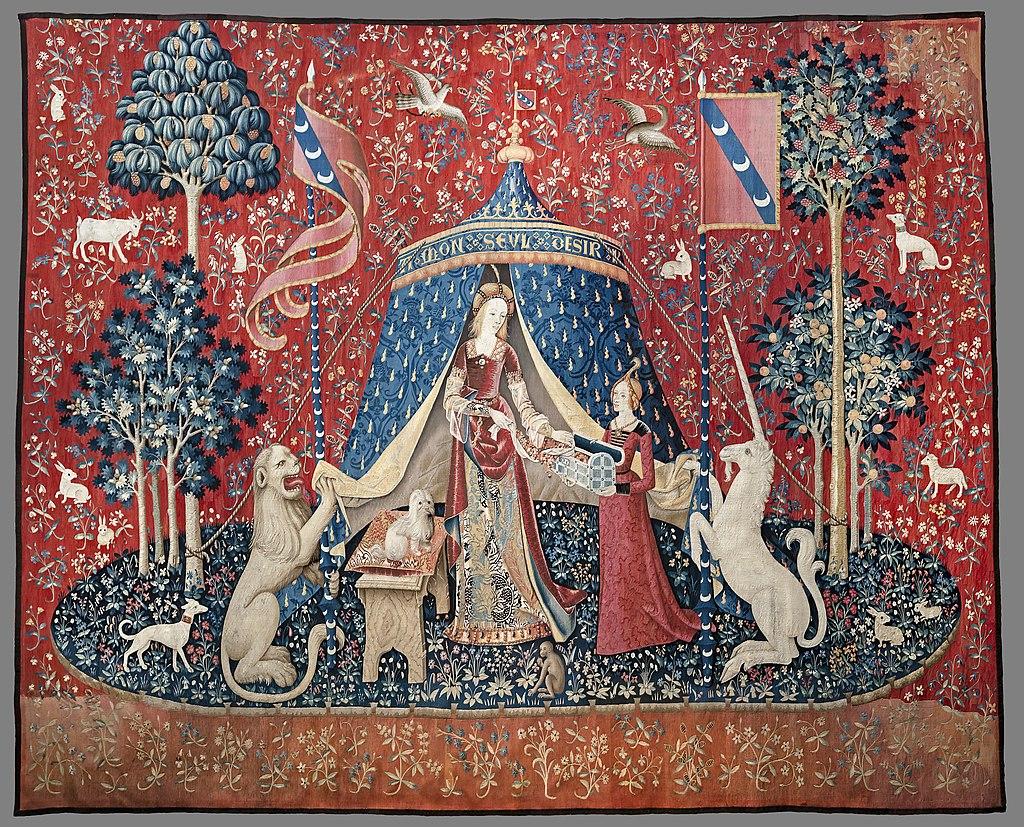Ignace Henri Jean Theodore Fantin-Latour was born in 1836 in Grenoble, France. His father, an artist, was his first teacher. When the family moved to Paris in 1850, Fantin-Latour spent three months on probation at the Ecole des Beaux-Arts, but he was not admitted. Undaunted, he began to copy the old masters at the Louvre. In particular, he studied the still life paintings of Louise Moillon (1610-1696) and Jean Chardin (1699-1779). Fantin-Latour said, “The Louvre, there is only the Louvre.”
Fantin-Latour and the Impressionists Manet, Morisot, Degas, Renoir, and Monet were great friends, but he chose to go his own way: “To make a painting representing things as they are found in nature…[I] put a great deal of thought into the arrangement, but with the idea of making it look like a natural arrangement of random objects.” He was an accomplished portrait painter, but his true calling was to paint flowers. He wrote, “Never have I had more ideas about Art in my head, and yet I am forced to do flowers.”
“Chrysanthemums” (1862) (18’’x22’’) (Philadelphia Museum of Art) was the painting that started Fantin-Latour’s long-time popularity with England’s Victorian society. His friend James Abbott McNeill Whistler promoted the flower paintings in England, and the British fell in love with them. There are over 800 extant still life paintings by Fantin-Latour, mostly of flowers. The small scale of his flower paintings made them fit well into heavily decorated Victorian houses. The chrysanthemum signified to the Victorians friendship, happiness, and well-being.
Influenced by17th Century Dutch still life paintings, Fantin-Latour placed his flowers against a neutral background. Although the painting is titled “Chrysanthemums,” he included several other popular flowers found in English gardens. The Victorians fervently studied Floriography, the language of flowers, and several floral dictionaries were available to the upper and the new middle classes. Flora Symbolica (1819) by John Ingram identified 100 flowers and their symbolic meanings and discussed the proper etiquette for sending flowers.
“Summer Flowers” (1866) (29”x23’’) (Toledo Museum of Art, Ohio) likely was painted in June because the variety of flowers in the glass vase, hydrangeas, ranunculus, and roses bloomed in June. They are accompanied by strawberries, oranges, and a white, lidded pot. For the Victorians white hydrangeas were symbolic of gratitude, happiness, and enlightenment. Several multicolored ranunculi in pink, yellow, and white, represented attraction, charm, and “I have a crush on you.” Two white rosebuds are tucked into the bouquet. Colors of flowers had different meanings. The color white was the symbol of purity, innocence, silence, and secrecy.
Strawberries have a long history as symbols of purity and sensuality, as well as fertility and abundance. The double meaning was derived from the sweetness and the beauty of the berry. The strawberry was a symbol of the Virgin Mary; the plant produces white flowers and red fruit at the same time, symbolic of Mary’s motherhood and continued virginity. A succulent fruit, and at the time as exotic one, the orange was frequently depicted in paintings of the Garden of Eden. Orange sections represented fertility. Orange trees were planted in luxurious gardens of kings, such as the Orangerie at Versailles.
Fantin-Latour credited his study of still-life paintings in the Louvre as his teacher and inspiration. Dutch still-life painters frequently showed off their painting skills by depicting the textures of slices of oranges and lemons. Fantin-Latour’s paintings contain a variety of brush strokes, thick and thin paint, and other techniques he employed to render the variety of textures and surfaces of petals and leaves, of glass, and of cloth and wood.
“Pansies” (1874) (18”x22’’) (Metropolitan Museum of Art) depicts two pots and a basket of multicolored pansies. Named after the French word pensée (thought), pansies were regarded as cheerful because of their bright colors and sweet faces. Their faces also could cause someone to become nostalgic, because reminding a viewer of a beloved person who no longer is present. Pansies were called heartsease by the ancient Greeks, who believed the ancestors of pansies, violas, could be used as a love potient, as did the Celts. Pansies are edible and have been used medicinally since the 16th Century. The first pansies were white and blue. English gardeners in the 1830’s fell in love with pansies and cross-bred over 400 varieties. The face first emerged in 1839.
“Pansies” allows the viewer to appreciate Fantin-Latour’s artistic skill. The rough texture of the pots is played off against the polished shine on the old wood table top, and the velvet softness of the pansy petals. The light and shadow dancing on the leaves create a pleasing effect.
The yellow pansy in the basket stands out. The bright yellow signifies happiness, joy, and positivity. The other yellow pansies in the painting draw the viewer’s eye around the composition to include a bunch of yellow apples at the lower right. The blue and purple pansies are symbols of devotion, honesty, and loyalty. Blue is the color of the sky and of the Virgin Mary’s garment. The dark purple pansy adds another message–broken love. It is a reminder of something beautiful that was lost.
“Hollyhocks” (1889) (29’’x24’’) represent the circle of life, ambition, fertility, and abundance. Hollyhocks bloom from the middle of summer until the first frost of fall. The plant had many medicinal uses, one of them hollyhock tea. The petals were used in jam, jelly, confections, and in salads. In England these tall, large, and sweet-smelling flowers were planted by the front door to welcome visitors, and invite in prosperity. Legend says the Crusaders brought hollyhocks back from the Holy Lands, thus the name holly. The crusaders made a salve from the plant to treat their horses’ hind legs, called hocks. In Egypt, wreaths of hollyhock were placed in tombs to help the dead on the journey to the afterlife.
Fantin-Latour’s arrangement appears to be a casual bouquet, but as in all his paintings, the composition is well planned, interesting, and unique.
The flowers placed on a well-worn wooden table stand out against a carefully chosen beige background. The center stems of pink hollyhocks relay a message of sensitivity and thoughtfulness. The yellow blossoms at the sides mean friendship and trust. The darker purple blossoms at the back and laid casually on the table are symbols of charm and grace. Purple is always considered the royal color, and it signifies tradition. Fertility and abundance are represented by the large number of buds at the end of the stems.
One additional use for hollyhocks in England was to shield the outhouse from view. However, their stalks stood tall enough to call attention to the structure so ladies would not have to ask where it was. The pleasing fragrance of hollyhocks also was useful. In Maryland, hollyhocks also were planted around the outhouse.
The peony appeared in China about1000 BCE, and then spread to Japan. In both countries peonies are called the “king of flowers.” In Greece, Paeon was the physician to the Gods. He healed several of them with a milky substance made from peony roots. Thus, the name of the flower. The flower has several meanings: love, honor, happiness, wealth, romance, beauty, good will, best wishes, and joy.
Fantin-Latour’s “Peonies” (1902) (16.5”x14.5”) shows five pink peony flowers in three different stages of life. Two peonies are buds, not yet fully opened, two are in full bloom, and the last has spread its petals out, and they are about to drop off one by one. The stems of the peonies are visible in the glass vase. Fantin-Latour’s careful study of the blossoms illustrate his masterful handling of light and shadow. Some petals catch the sun, coming from the right, that bleaches their pink color almost to white. A range of pinks lead to the deeper pink center of the flower. A touch of sunlight glistens on the glass vase.
Fantin-Latour married Victoria Dubourg, a fellow flower painter, in 1875. They lived in Paris and spent summers at Victoria’s family country estate in Normandy, France. He was a quiet man. He died in 1904. French novelist, playwright, and art critic Emile Zola was known for his support of Impressionist artists, also appreciated the work of Fantin-Latour: “The canvases of M. Fantin-Latour do not assault your eyes, do not leap at you from the walls. They must be looked at for a length of time in order to penetrate them, and their conscientiousness, their simple truth–you take these in entirely and you return.”
Beverly Hall Smith was a professor of art history for 40 years. Since retiring with her husband Kurt to Chestertown in 2014, she has taught art history classes at WC-ALL. She is also an artist whose work is sometimes in exhibitions at Chestertown RiverArts and she paints sets for the Garfield Center for the Arts.



